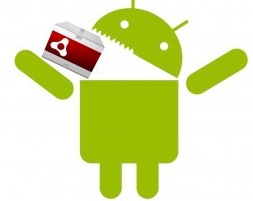
Adobe already released an Android-compatible version of Flash, its widespread technology for games, video, and other media. But Flash only supports media in the Web browser — it doesn’t address the main channel for getting content onto smartphones, namely applications that users can purchase and download.
[aditude-amp id="flyingcarpet" targeting='{"env":"staging","page_type":"article","post_id":218981,"post_type":"story","post_chan":"none","tags":null,"ai":false,"category":"none","all_categories":"business,mobile,","session":"C"}']That’s where AIR comes in. AIR started out as a platform for Internet-connected desktop apps, but Adobe says it now allows mobile developers can build applications using the company’s existing Web-development tools, then push those apps onto devices with Google’s Android operating system. The company has plans to bring AIR (and Flash) to other smartphones as well. Adobe said in August that 7,000 developers signed up to participate in the test program for AIR on Android.
Of course, Apple is the big holdout against Adobe’s strategy. Apple still doesn’t support Flash in the browser of its iPhone and iPad devices. Apple also changed its developer agreement this year to prevent Adobe from exporting Flash apps onto the iPhone. Adobe chief technology officer Kevin Lynch said that as a result of Apple’s “legal game”, Adobe halted development of its iPhone exporter.
AI Weekly
The must-read newsletter for AI and Big Data industry written by Khari Johnson, Kyle Wiggers, and Seth Colaner.
Included with VentureBeat Insider and VentureBeat VIP memberships.
If you’re a developer, you can read about how to publish an AIR app on the Android Market in this blog post from Adobe’s Ryan Stewart. In a follow-up post, Stewart noted that if Android users without AIR try to run an AIR app, they’ll be asked to follow a simple AIR installation process.
[image via Adam Coburn]
VentureBeat's mission is to be a digital town square for technical decision-makers to gain knowledge about transformative enterprise technology and transact. Learn More
